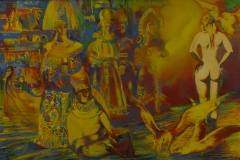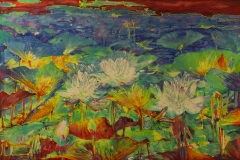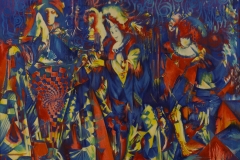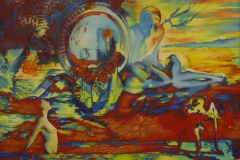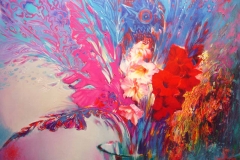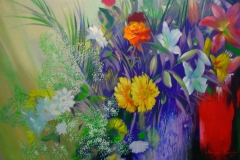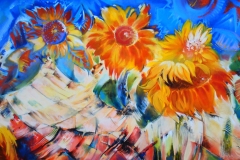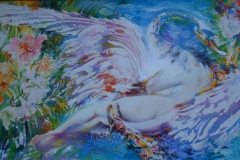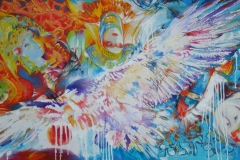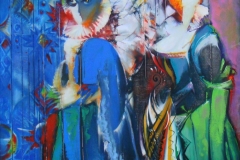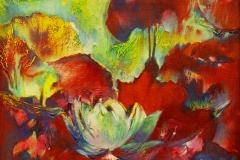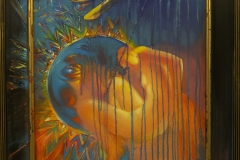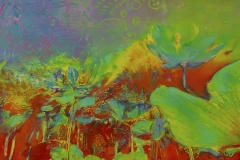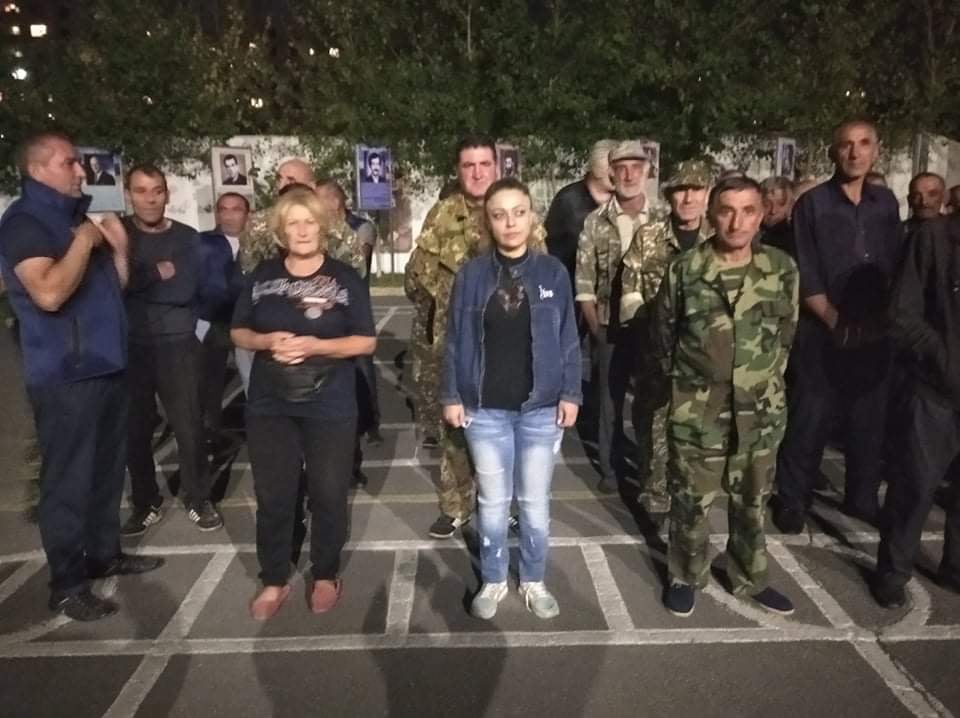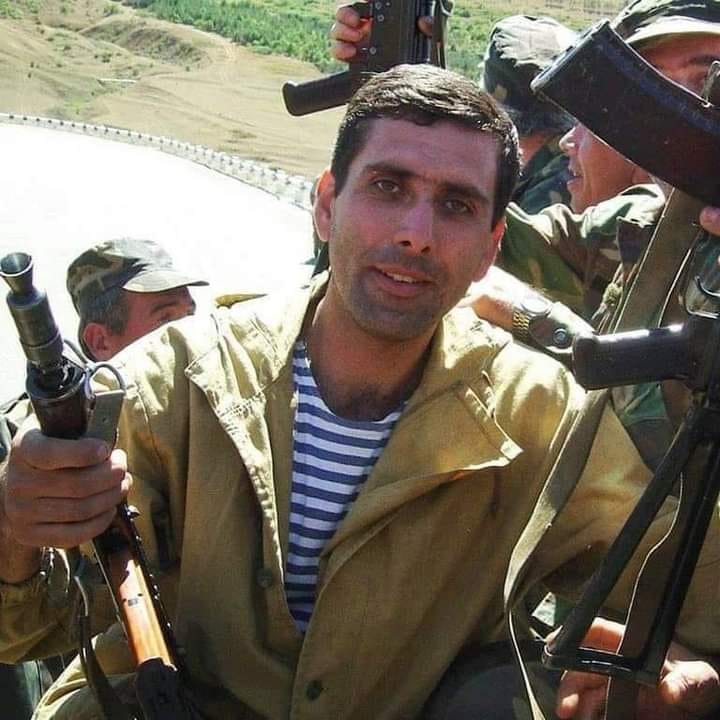Interview with artist Sergey Rubenyan
Artist Sergey Rubenyan was born in Julfa in Naghijevan and moved to Abovyan in 1970s.
He started his art education in Nikolay Kotanjyan’s art studio since early childhood. He graduated from no 6 high school in Abovyan. Thereafter, went on to graduate from College of Fine Arts after P. Terlemzian.
-Sergey, how did you decide to become an artist. Who encouraged you?
-Initially it was my father. Later, the director of the Children’s Art Museum at the time, late Zhanna Aghamiryan, Hernik Igitian’s wife, and Nikolay Kotanjyan, the head of the famous Kanas Culture House. They all played a great role in my education both psychologically and to develop my skills as an artist and a painter. Nikolay Kotanjyan, in particular, had mastered twelve languages, was an expert of art history and medieval frescos. Those were exactly the seeds of knowledge planted by him, that helped me deliver the illustration for the interior of the Armenian church in Moscow.
-How long had you practice your art in Armenia and what successes did you have?
-I have but studied in Armenia. After the graduation, I had an offer to move to France and work there, so I lived and worked from Léon for three years. Had several successful art exhibits at Les Nabis gallery, then in cities of Mâcon and Villeurbanne. I had individual patrons as well: for example, Akelian, Bghadrian, and other families.
-When did you fall in love?
-I’ve always been in love. If you are interested in when I’ve got married, It happened in 1995 in Abovyan. Emma is my chosen one. We are still together because I’m a patient person. However, she would claim the same about herself if you ask her. He have a son and a daughter.
We patiently carry on carrying on.
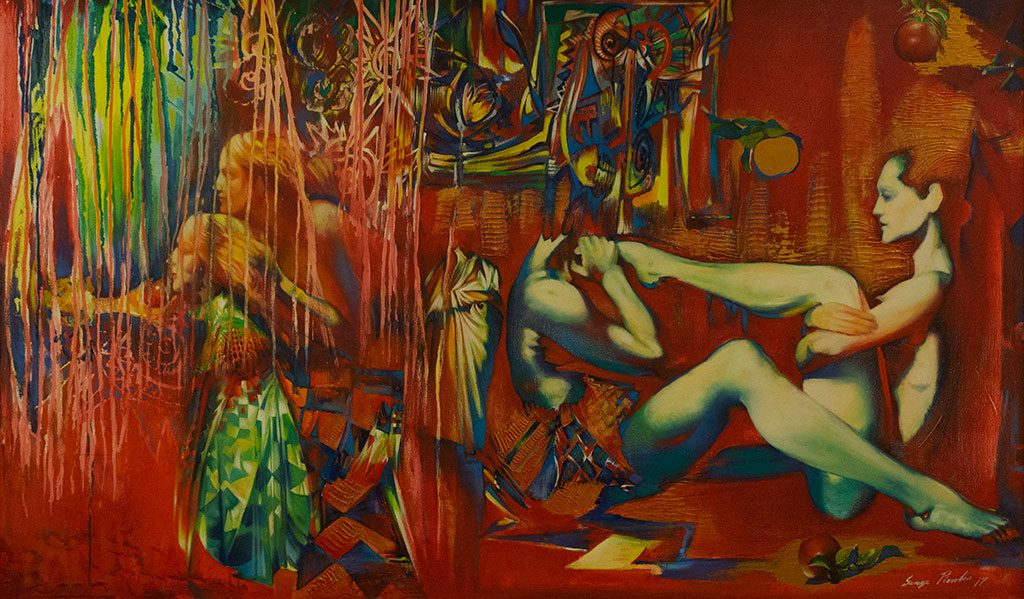
-You moved to Russia. Why?
-While in Armenia, I was a man who rigorously contributed to the breakup of the soviet union. Even though we were breaking it up to build a new and a better one in its stead, but very quickly found out the the ones leading our movement only intended to break it up. The result was so embarrassing, that I’ve decided to leave the country.
-How did your creative endeavour in Russia unfold.
-There were so many opportunities, that success found me lighting fast. Russia needed working people, especially my kind, that could rigorously work day and night. For seven years, I was the exclusive artist for the commissions by Indonesian embassy. My reputation spread to the extent that the ambassador’s relative, who worked at the Indonesian embassy in Germany, would travel to Moscow to commission me to do some artwork for him and would buy dozens of paintings all at once.
A Chinese trading company would buy all my canvases twice a year. They would just get everything I’ve got.

-What was the secret? Usually the world buys everything from China. Was that the red color was dominant in your work?
-One of the buyers, a general, when asked the same question, said, “foreigners get Chinese art from China. We want to get yours. Yours are not Chinese.”
-Very well. And when the construction of the Armenian church in Moscow begun, your talents and skills were to serve the church building?
-Religious theme accompanies me since collage. My thesis work had a spiritual theme as well. I hid that work with my brother, but for reasons I cannot understand, it is now in the “Grey Church” in Arinj.
Shortly after arriving in Moscow, I’ve co-founded a school of iconography with Russian priest. Meanwhile I did piece on the topic of Jesus’ Crucifixion, which that priest later purchased for the Russian church in New York.

-In other words, you have already had enough experience and skill before committing to the Armenian church project?
-Of course, especially because the works with spiritual theme are born when there is the right environment for their execution. One day, when I was at the courtyard of the newly built church, I suddenly realized that I can use my abilities to serve God and people who live a spiritual life.
After several failed attempts to meet His Eminence Ezras, a friend from New York encouraged me to write a letter and personally deliver it to the church secretariat. His Eminence Archbishop phoned right away and invited to meet and discuss my vision. Many credible individuals had expressed a willingness to author the frescoes of the church, but with the God’s will and blessing of His Eminence Ezras I was granted the honor to create that very important piece.

There was a unique spiritual bond between me and His Eminence which continues till this day. I worked on the sketches and frescoes for two years. I illustrated the central cupola with Christ’s image, the areas between pillars – the apparition of Lusavorich, the invention of the alphabet, Noy coming down from mount Ararat and Armenia adopting Christianity. On the ceiling of the central entrance, I illustrated Jesus Christ’s arrival to Jerusalem.

Inside the chapel I painted the The Last Supper, and images of four evangelists – on the four pillars.

Some of my works also include the frescoes of the Armenian church in Izhevsk and several Russian churches around Moscow.

– You’ve truly done a tremendous work. Your next destination was the US. How are you doing in Los Angeles?
– I currently have my studio and exhibition hall in Burbank where I create and sell my art. At the same time I exhibit and sell art pieces created by other authors. I also offer painting evaluations and art expert services.
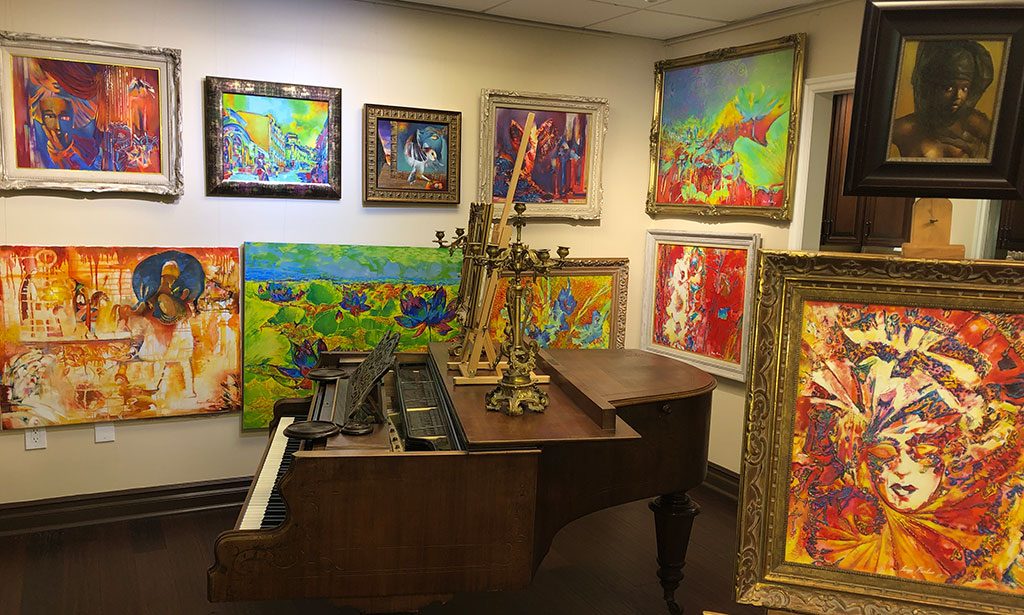
– What is the difference between the creative periods in Russia and US?
– I felt very confident and comfortable in Russia as I was creating according my art education and experience. Here in the US I have to learn new school art, new philosophy and taste that are fundamentally different from what I’m used to. Whatever seemed to be inappropriate to me in past, turns out, is a fundamental culture here. It’s very interesting to me and also has a great demand among public.
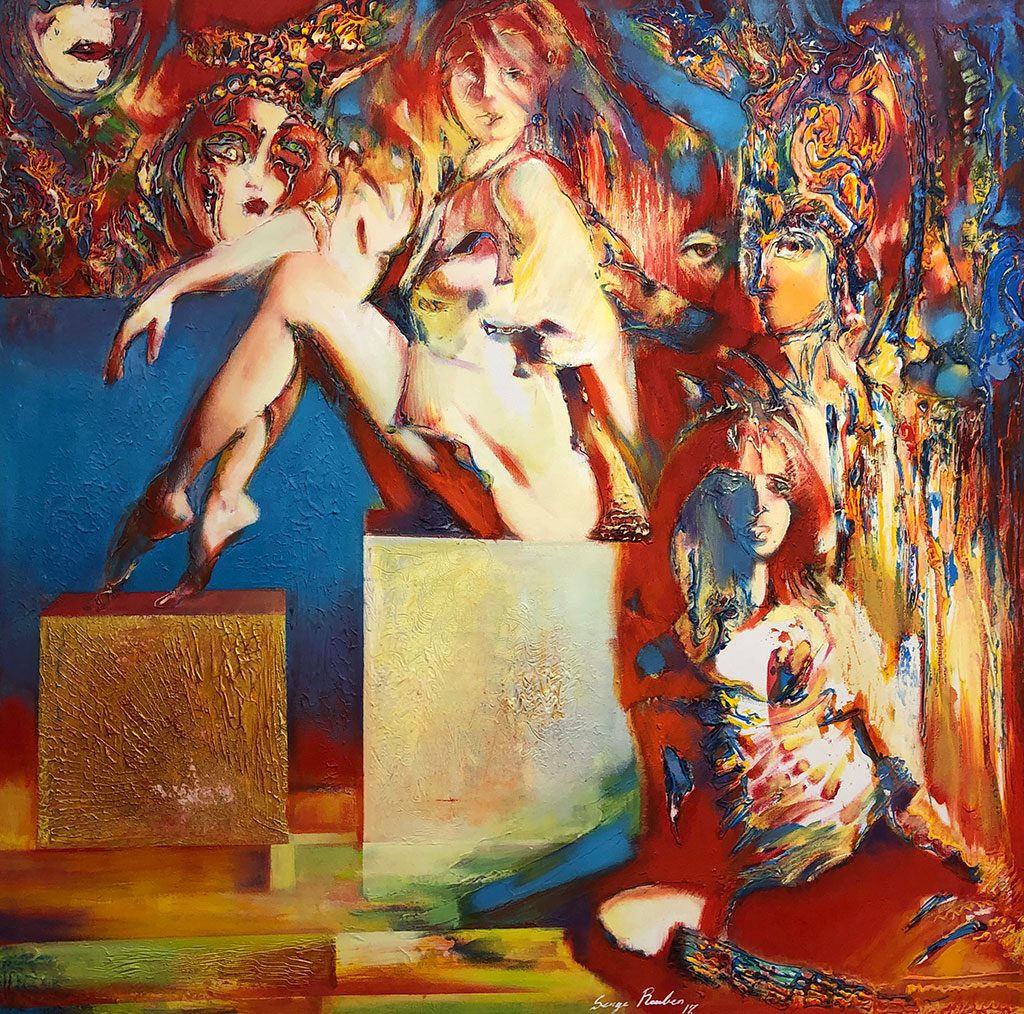
– As far as I know you also illustrated the wall of Zodiac, the first Disco club in Abovyan in 1984. What will you wish to your fellow Abovyan residents.
– I wish them happy and colorful life, progressive as much as it befits our times, like the painting in the hall of Zodiac. I hope that fresco still exists.
Interview by Norayr Hakoyan

